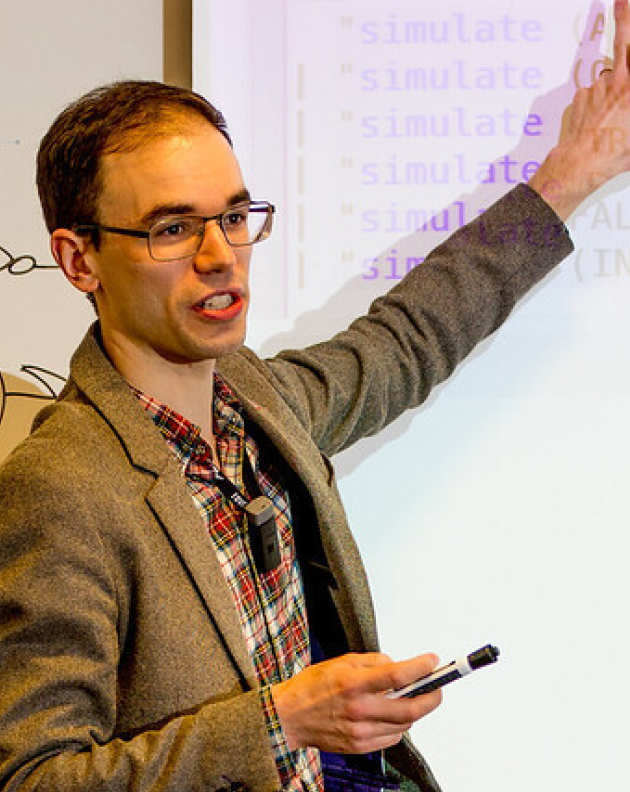John Wickerson
 Dr John Wickerson's research is in computer programming languages and hardware design. “When engineers design computer chips, they rely on tools called "logic synthesisers" to automate the process. I'm trying to find out whether these logic synthesisers are really as trustworthy as engineers assume them to be.”
Dr John Wickerson's research is in computer programming languages and hardware design. “When engineers design computer chips, they rely on tools called "logic synthesisers" to automate the process. I'm trying to find out whether these logic synthesisers are really as trustworthy as engineers assume them to be.”
Making things simple
He describes his work as "taming complexity". “A large part of my job involves working with complicated things (such as programming language standards, hardware designs, or computer specifications), and working out how to boil the essential parts of them down to something that is simple enough for me to understand. Then, hopefully, I can do something interesting or useful with them." Some of his research has been put to good use helping detect potential 'bugs' in computer chips, before they are even designed.
The students I've met were all great, and I'm sure there must be many more like them, all over the country, who might not have the confidence to apply to a place like Imperial. I'd like to see even more efforts to reach out to those students, both from myself and from the University as a whole."
Alongside lecturing, John also teaches small groups of first year undergraduates, and is a deputy tutor for postgraduate students in our department.
He is very keen to widen participation in engineering, and has been involved with two Sutton Trust summer schools, which aim to address social mobility and educational disadvantage, by giving bright students an insight into life at a leading university.
In an alternative universe John says he’d enjoy graphic design. “I've always been a big fan of clever logos and nice fonts. To some extent I get to indulge in this passion in my current job, as I do enjoy spending time (probably too much time, to be honest) making beautiful figures and graphs in my scientific papers.”
We asked all our engineers to tell us something that had made them proud about their achievements. “If I were to go into "immodest" mode for a moment, I would bring up something a nice reviewer said about one of my early papers. I had come up with a system for proving that computer programs are correct, which consisted entirely of diagrams. The idea was that if you could connect all the "puzzle pieces" together, then you could be sure that your program was free from bugs. The reviewer said that these diagrams were like "works of art", and I was very chuffed to hear that.”


